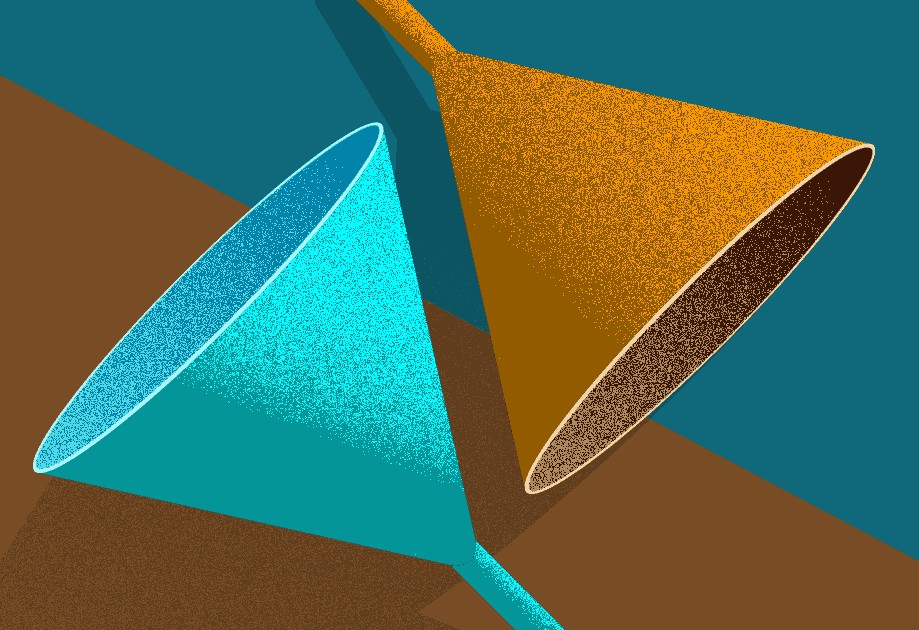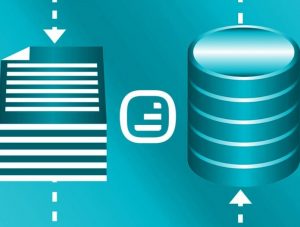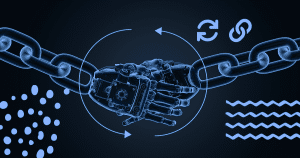Content Marketing is a strategy with evident principles: through the production of relevant content, you can reach potential consumers, create positive relationships, and generate more conversions.
Moreover, by using intelligent data and segmentation techniques, your company can attract the attention of Internet users, turn them into leads, and encourage qualified leads towards the bottom of the funnel.
In fact, 98% of the strategists interviewed in a survey conducted with B2B companies stated that content is the most vital instrument of their marketing.
But how to put this strategy into practice? Creating interactive content for each stage of the buyer’s journey is a good place to start.
Then, how can we outline a plan for a Content Marketing strategy?
In this text, we will answer such questions through the following topics:
- The meaning of sales funnel
- The importance of maintaining a blog and outreach channels
- Top of the funnel: discovery and interest
- Middle of the funnel: consideration and intention
- Bottom of the funnel: evaluation and purchase
- After the sales funnel
- Wrap Up
The meaning of sales funnel

The sales funnel is a metaphor to demonstrate the path taken by an ordinary user in their journey to become a potential client, a consumer, and, finally, a brand advocate.
It’s portrayed in the form of a funnel — from a wide top to a short base — because the attraction and acquisition of leads will always be greater than the conversion of customers.
It’s important to highlight that your content planning should always take into account that no matter how many people make initial contact with your company, only a selected part of this group will become your customer.
At each stage of the sales funnel, the potential consumer has a different mentality: they search for new information and have a specific online behavior.
That’s why you need to guide your content production according to each one of the funnel stages.
Therefore, you must know what kind of information and content — articles, ebooks, guides, tutorials, webinars, campaigns, among others — are most effective when talking to your potential customers.

The importance of maintaining a blog and outreach channels
Before you decide what type of content is the most effective for each stage of your sales funnel, you need to check whether your company has the necessary digital infrastructure for Content Marketing.
First, you need to understand the importance of creating and maintaining a blog — on or off your website.
It’s the most important way of attracting customers to your brand. It’s through your blog that your company will be able to feed the interested users and guide them through the sales funnel, offering different types of content.
Likewise, you need to know that the information and content you produce cannot stand still in one place: you need to spread it around.
To do this, you and your team will need to identify the main social media and online platforms to insert your brand.
This selection should follow a simple criterion: where is your audience? What websites does your actual consumer visit?
Knowing the profile of your customers and who is your buyer persona is vital not only to decide if your company should be on Facebook, Twitter, Instagram, among others, but also to guide your content production.
Below, we list the main forms of content for each stage of the sales funnel.
However, remember that investment in consumer research will always be useful for your marketing strategy.
After all, the more knowledge you have of your potential consumer’s needs, the better your content will perform.
Top of the funnel: discovery and interest
At the top of the funnel, you need to develop content focused on attraction.
The idea is to stimulate the user’s first contact with the brand, starting new relationships.
The individuals at this stage usually end up on your company’s website through Google search results or social media posts.
The user at this stage is not interested in purchasing a specific product to solve a problem.
In fact, they barely know what their problem actually is.
How the top of the funnel works
Let’s suppose you own an online car dealership and want to produce content that will attract new readers to your sales funnel.
These individuals who may be interested in your attraction articles don’t yet consider buying a car.
They know the difficulties and desires of day-to-day life, such as take time to get to work on public transportation, want more convenience for their lives, and so on.
Therefore, the potentially interested party here feels only the signs of a problem. And it’s up to your business, through content, to give this problem a name and offer a possible solution.
An interesting piece of content for the car dealership example could be a blog post entitled “Cars vs. public transport: what are the pros and cons?” or “Infographic: the real benefits of a car in your life”.
The best content formats for the top of the funnel
Blog posts
The most common type of content at the top of the funnel are blog posts. They are easy to create and manage through a CMS (Content Management System).
You should produce posts in large quantities at this stage, favoring short texts, simple to understand.
The idea is to answer common questions the buyer persona might look in the search engines.
Some good suggestions for blog posts are guides, tips, lists, tutorials, and objective answers.
These texts should be educational and useful.
Investing in viral content is also a great idea, as it can generate organic traffic in social media.
Webinars
Webinars are videoconferences, usually performed live, in which specialists comment on a particular subject.
In fact, they’re useful at any stage of the funnel, so you must consider your persona’s preferences.
At the top of the funnel, webinars should aim to answer more basic questions, because the user is interested in the subject but doesn’t understand it in depth.
Interactive videos
Interactive videos are, no doubt, among the most prominent format at the moment.
Platforms that invest in audiovisual, such as YouTube, Instagram, and Vimeo, are powerful tools to attract visitors.
Just like the top funnel texts, interactive videos must be short and objective and answer the most elementary questions to attract leads.
The critical thing to remember is that, at this stage, the user still has no in-depth knowledge about what you sell.
So the content should be broad but, of course, of high quality.
Middle of the funnel: consideration and intention
The user here is no longer a mere newcomer to your website or blog, but someone who knows they have a problem and wants to find possible solutions to it.
This is where a stranger becomes a lead and gets even closer to the decision moment.
In other words, this is the part of the sales funnel where future consumers get to know their symptoms and diagnosis, starting to look for options to solve the problem.
Potential customers will be willing to provide basic information about themselves and their company (name, email, phone, number of employees, etc.) in exchange for more specific content to their needs.
How the middle of the funnel works
Let’s go back to imagining: your business is an e-commerce of fishing tools, and you want to create content that will point to the solution provided by your product.
An interactive ebook “Beginner Fishing Guide” or a webinar “Everything you need to know for good fishing” could reach and educate the interested consumer.
When they offer their information in exchange for these materials, you get to know more about the lead and may have more appropriate data for the next step of the sales funnel: that of evaluation and purchase.
The best content formats for the middle of the funnel
When you are in the middle of the funnel, the user is already better informed, so the content should be deeper than those produced at the top of the funnel.
Therefore, it’s necessary to answer more specific questions and go even deeper into the subject.
Blog posts
Here they are again. However, as the main purpose of the funnel middle is to convert, it’s possible to create more extensive and elaborate content.
After all, the user is thirsty for knowledge, and you can satisfy them.
More complete posts are often used at this stage. The information is more advanced and unravels themes that have been superficially approached at the top of the funnel.
Interactive ebooks
It’s highly recommended that you offer the user more developed content.
Unlike blog posts, ebooks require more effort and time from the marketing team, as they require designing, manipulated images, and format conversion.
However, this model allows you to collect more specific information from the user, such as geographic, demographic, and behavioral data. To better explore its benefits, invest in creating interactive experiences.
Also, people who download an ebook indicate they’re interested in its content, which reveals that the lead is engaged.
Podcasts
The demand for audio media is very high in today’s world.
That’s because, unlike other formats, audio doesn’t require full user concentration and can be consumed at the same time as the user performs various activities, such as working out, driving, or walking.
Podcasts are great solutions since they work as radio programs and can have longer duration times.
Slideshows
Slideshows are also widely used in the middle of the funnel, as they allow user control over the consumed content and can present graphics, images, and various other features.
Interactive infographics
Another format quite common at this stage, but that demands some technical knowledge for production is the interactive infographic. The idea is to group text and images to make it easier for consumers to understand the subject.
Bottom of the funnel: evaluation and purchase
At this stage of the funnel, your qualified lead is about to become a business customer.
The audience is considering your product or service as a solution for their problem, and it’s the content you produce that will convince them.
How the bottom of the funnel works
Let’s go back to our examples. The online car dealership could produce an exclusive study, or an email campaign with the addresses collected at the middle stage, with the main models sold and the needs they fulfill.
For the fishing materials, e-commerce can create a kit with the main tools and accessories to make a difference by bringing professionalism to the fishing time.
This is where the sales department also acts. If a potential consumer is close to conversion, but still has questions, a more personal contact, either by email or phone, can help you to clear up their questions and motivate them to conclude the long-awaited purchase.
The best content formats for the bottom of the funnel
Users at the bottom of the funnel are very close to closing a deal. So they’re interested in hearing about your brand.
Customer cases
As a potential buyer, users open up a dialogue about what you have to offer at this stage.
So how about showing them situations of customers who have succeeded with what you offer?
Use any of the formats to offer case studies showing that your product or service can help them.
Advanced tools
Users at the bottom of the funnel present high levels of engagement. Thus, trials, free tools, and demo versions are very welcome.
Testimonials
As we have already mentioned, the people at the bottom of the funnel are one step away from purchasing. Therefore, it’s a good idea to show testimonials from buyers who have already succeeded as your customers.
Product reviews
In our example, we used a fishing shop. So how about showing the different types of available sticks, for example? That will certainly make the purchasing decision easier.
After the sales funnel
If you think your goal was accomplished after the sale, you’re mistaken.
It’s a lot cheaper to keep a customer than to acquire new ones. So, it’s time for you to delight the consumers and turn them into frequent clients.
Brand loyalty is one of the most important factors in the Digital Marketing world. Thus, you must continue to produce content for users that you’ve already converted.
The best content formats to delight and retain clients
At this stage, you can use various content formats mentioned previously. They add to this:
- special offers
- instructional videos
- specialized support
- advanced tutorials about your product or service
Remember: any format can be used at all stages of the sales funnel. What really defines which one you should use varies according to the user’s level of education and the strategy details.
Wrap Up
The sales funnel can be a strong ally of your company to understand your consumer better and create unique content that meets their needs.
Using interactive content in the buyer’s journey will maximize your conversion rate and generate even more opportunities.
Did you like the article? We have something else to offer you. Check out another post and learn about how to create interactive content experiences that drive sales!
Start creating interactive content with Ion and increase your marketing results!
Start creating interactive content with Ion and increase your marketing results!









